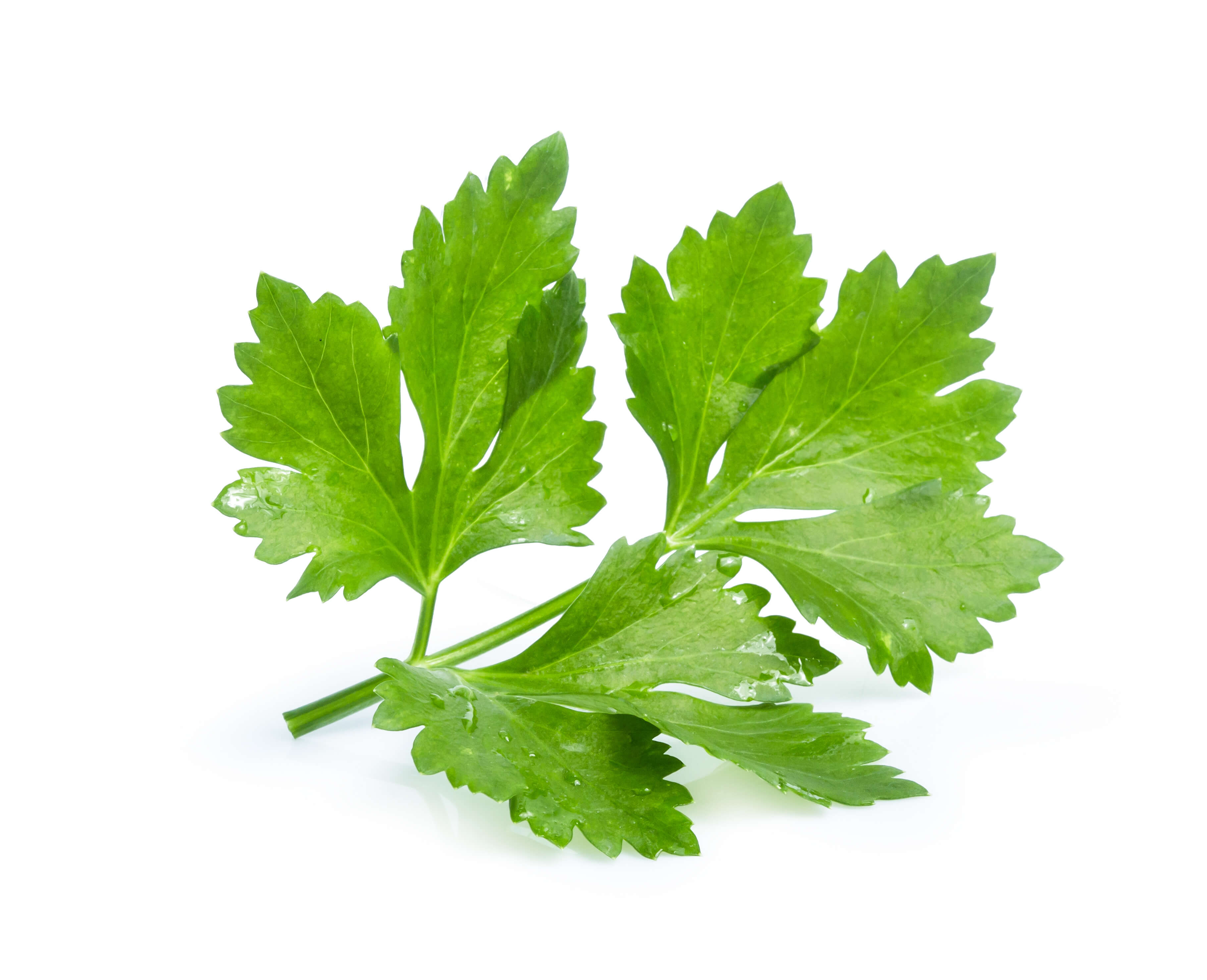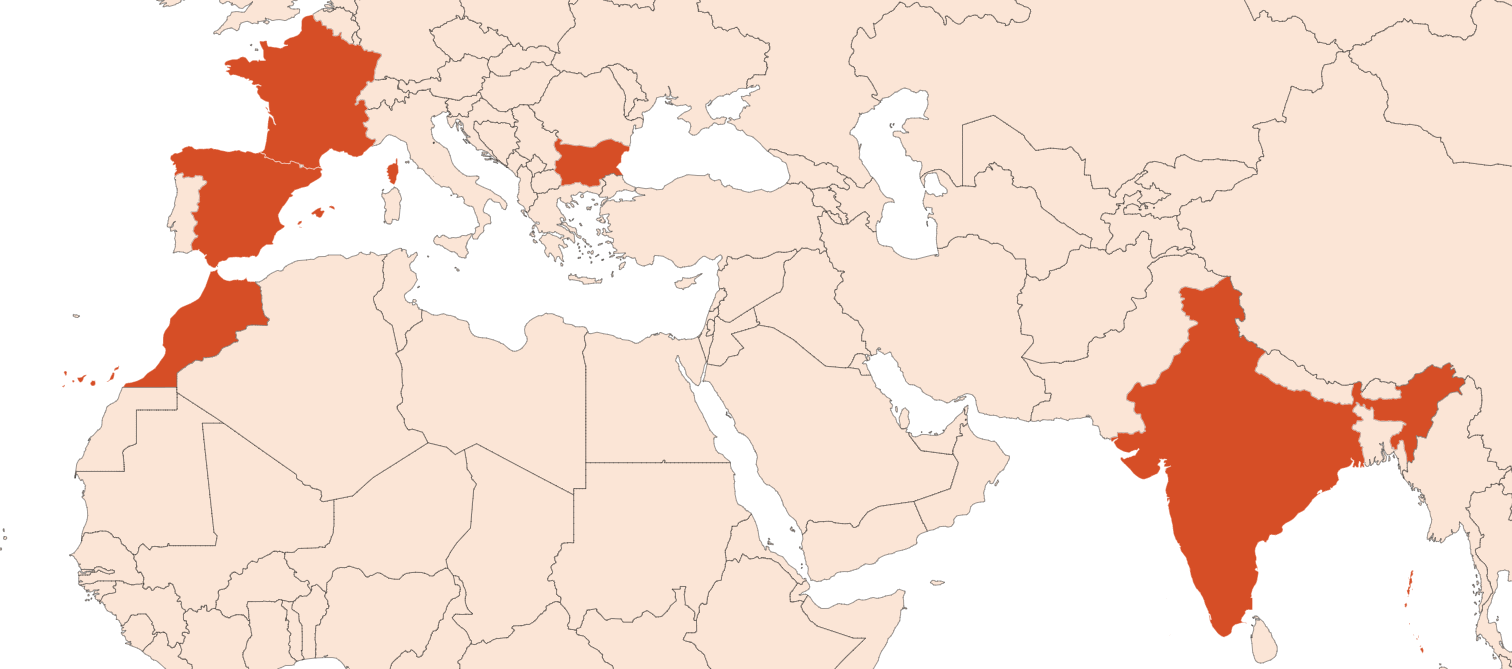Coriander Leaf EO
Naturelle
Aldehydes > Zesty > Orange > Agrestic

Crédits photo: ScenTree SAS
Latin name :
Coriandrum sativum
Botanical profile :
Coriander is a plant belonging to the Apiaceae family and the genus Coriandrum.
Geographic origin :
Coriander is historically native to the Mediterranean sea and West Asia. Today, it is grown mainly in India (36% of world production in 2008), the main producer, but also in Bulgaria (28% in 2008), Morocco (7% in 2008) and Western Europe (France, Spain in particular).
Chemotypes :
There are two varieties of coriander:
Coriandrum sativum L. : Mainly cultivated specie The European variety is smaller, rounder and has a more powerful smell. The Indian variety is larger, oval and clear but has a less significant smell.
Coriandrum tordylium : Wid coriander, rarely used.
Coriandrum sativum L. : Mainly cultivated specie The European variety is smaller, rounder and has a more powerful smell. The Indian variety is larger, oval and clear but has a less significant smell.
Coriandrum tordylium : Wid coriander, rarely used.
Extraction process :
India produces coriander on about 600,000 hectares of land, in other words 400,000 tons every year. Exports of cilantro seed from India represents 35% of world exports. The seedlings are usually propagated by seed sowing in October-November, at a rate of 12 to 30 kg of seed per hectare cultivated, depending on climatic conditions (the more moist the soil, the more seeds are planted). Seedlings are planted every one or several tens of centimetres. The cultivation of coriander is subject to the use of chemical or natural fertilizers depending on the crop. Finally, it needs a warm atmosphere and regular irrigation.
Seeds are usually collected by hand at their maturity (green to yellow in colour). Leaves are cut manually, gathering the stems and cutting them a few centimeters above the ground, and dried in the shade before steam distillation. At the end of the process, the essential oil is collected in an essencier by decantation.
The extraction yield of the essential oil oscillates between 3 and 4%.
Seeds are also extracted to recover Coriander Seeds EO, and whose supercritical CO2 extraction enables the collection of an extract about 10% richer in Linalool than a conventional distillation.
Seeds are usually collected by hand at their maturity (green to yellow in colour). Leaves are cut manually, gathering the stems and cutting them a few centimeters above the ground, and dried in the shade before steam distillation. At the end of the process, the essential oil is collected in an essencier by decantation.
The extraction yield of the essential oil oscillates between 3 and 4%.
Seeds are also extracted to recover Coriander Seeds EO, and whose supercritical CO2 extraction enables the collection of an extract about 10% richer in Linalool than a conventional distillation.
Major Components :
7-Dodecenal (20-25%)
Aldehyde C-12 Lauric (15-20%)
Aldehyde C-10 (≈10%)
9-tetradecanal (≈9%)
5,8-tridecadienal (≈6%)
Aldehyde C-8 (≈5%)
Tridecanal (≈4%)
3,6-undecadienal (≈4%)
Aldehyde C-11 Undecylic (≈3%)
Aldehyde C-12 Lauric (15-20%)
Aldehyde C-10 (≈10%)
9-tetradecanal (≈9%)
5,8-tridecadienal (≈6%)
Aldehyde C-8 (≈5%)
Tridecanal (≈4%)
3,6-undecadienal (≈4%)
Aldehyde C-11 Undecylic (≈3%)
- Uses in perfumery :
- Coriander Leaf EO is a natural reference for aldehydic materials. It is commonly used in 100% natural perfumery to bring a aldehydic note, in floral or citrus notes for example.
- Other comments :
- Coriander is a spice that has been used for a long time. Indeed, the first mentions of this spice are dated -5000 B.C. Many mentions of coriander cultures are also present in the Bible.
- Volatility :
- Head
- Appearance :
- Yellow to orange liquid
- Stability :
- Aldehydes of this essential oil may react with Methyl Anthranilate or Indole to form Schiff bases. They also can form diethylacetals with no big impact on their smell.
- Price Range :
- €€€
- Aromatherapy :
Informations provided below are taken from reference works in aromatherapy. They are given for information purposes only and can not constitute medical information, nor engage the responsibility of ScenTree.
Coriander Leaf EO has anti-inflammatory and sedative vertues and is indicated in case of stress, anxiety and gastritis.

Crédits photo: ScenTree SAS
- EINECS number :
- 84775-50-8
- FEMA number :
- 2334
- Allergens :
- This ingredient does not contain any allergen.
- IFRA :
- This ingredient is restricted by IFRA
- Annexe I :
- Some regulated synthetic ingredients are found in nature and in certain proportions in natural ingredients. This presence in nature has to be taken into account when calculating limits of use recommended by the IFRA. In case you do not know these concentrations, you can use the ones estimated by the IFRA. Here they are :
| List of regulated compounds contained in this ingredient | ||
|---|---|---|
| Regulated ingredient name | CAS N° | Estimated Concentration |
| Geraniol | 106-24-1 | 0,8 |
This ingredient is not restricted for the 48th amendment
To learn more about IFRA's standards : https://ifrafragrance.org/safe-use/library
ScenTree is solely responsible for the information provided here.


